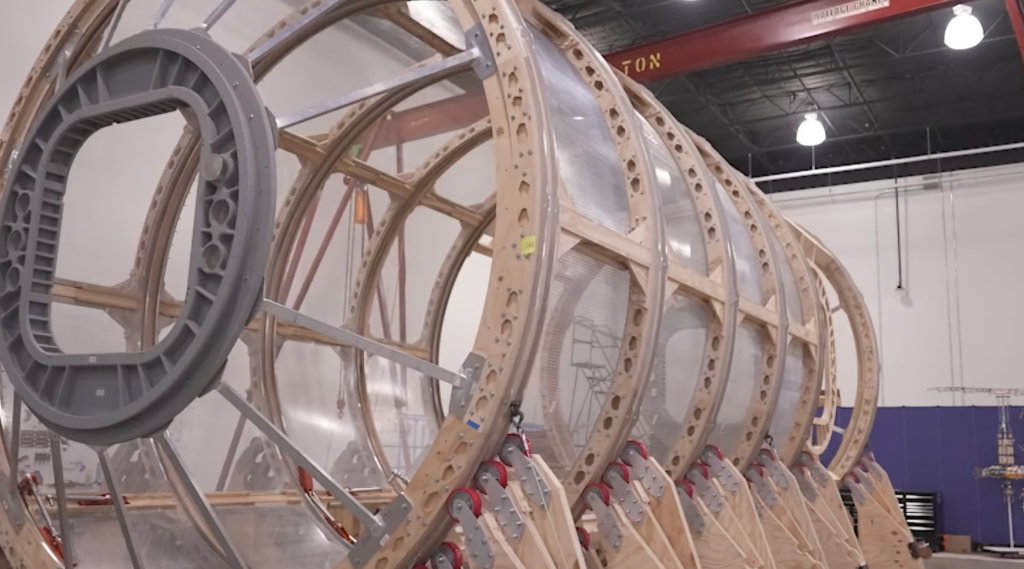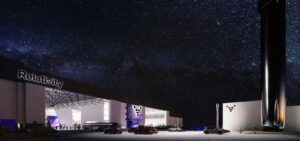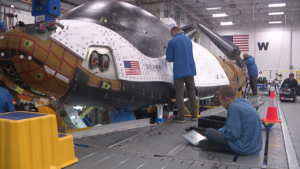
The First Segment of NASA’s New Station Is Almost Done!
As the International Space Station nears its retirement date, NASA and its partners are continuing to work on a future replacement. Back in 2020, the agency picked Axiom Space, a company based in Houston to build commercial space station modules and attach them to the ISS. In the last few years, they have been busy and are making fast progress on the first segment.
Just recently we got more information on the exact progress, upcoming tests, and the expected future launch date. The plan is to consistently manufacture and launch these next-generation modules in space, attach them to this ISS one by one, and then disconnect before the ISS retires, and when the new station is fully independent. Here I will go more in-depth into the new company update, Axiom’s plan, what to expect in the coming months, and more.
Station Progress

A few days ago Axiom shared more information on the station and its current progress. This included both specific updates and footage of the development and manufacturing process. In one quote Matt Ondler, the Axiom president said, “The pressure vessel is undergoing welding at Thales Alenia, our partner in Italy. They’re some of the largest forgings in the world, there’s only a couple places in Europe that could even forge some of the pieces” he said. For a while now Axiom has been working with this company to create some of the main station structures. Up until now, none of the segments have been shipped back to Axiom as they weren’t complete. This however is expected to change relatively soon.
In another quote, he mentioned, “The pressure vessel will arrive in Houston next year, and then well do all the final outfitting at our space port facility. And in the 50 year history of human space flight and Houston it will be the first human rated spacecraft built in Houston” he pointed out. The fact that they expect the pressure vessel to arrive next year is quite significant as that would mean the bulk of the work is done as far as manufacturing goes. From there Axiom would complete the initial module before launching it in 2026 to be attached to the ISS. This initial module is named Axiom Hab 1, or Ax-H1. It will be outfitted with crew quarters, and will feature both research and manufacturing capabilities.
Even though Axiom doesn’t do the main welding which they outsource to Thales Alenia, they do pretty much everything else. This includes creating the life support system, guidance and navigation, a propulsion system, etc. The president highlighted, “Our philosophy is to keep as much engineering in-house as possible. It allows us to have long expertise over a long time because we want to be building modules and adding to our space station for years and years.”
Focusing more on the design, each Axiom module’s primary structure features four radial bulkheads to which other space station modules and visiting spacecraft can attach, supporting increased traffic and future expansion. As mentioned prior, the first Axiom module’s bulkheads are well into their machining over at Thales Alenia Space’s Turin facility. Various images from the company highlight the size and strength of these core structures. In addition to these core structures, Axiom wanted to make the station special and feature one of the biggest observing rooms ever sent into space. In various renders and animations, you can see this large 360-degree view room named the cupola. While it looks incredible, it’s by no means easy to create and launch such large windows into space. In fact, the eight windows that will make up this observatory will be eight of the largest windows ever constructed for the space environment. Right now Axiom has created a test unit that continues to undergo increasingly extensive vacuum seal and stress testing to confirm the design meets all leak rate, outgassing, and material deformation requirements.
The copula is set to launch on the third mission attached to one of the station’s primary segments. Once attached it will then be moved from the side of the segment to the bottom of Ax-h1, the first module launched. Finally, its window covers will open revealing the view.
NASA’s New Station

Current plans call for the ISS to be retired by around 2030. This process will involve purposely deorbiting the massive station to burn up in the atmosphere. This being said, NASA knows it will still need access to LEO. For this reason among others, they are helping fund and facilitate different commercial projects including Axiom Station. Fortunately for Axiom, they are the only company with the unique opportunity to attach to the ISS. A process they plan to take advantage of.
While dates have changed quite a bit overtime and will likely continue to, Axiom has set up a roadmap of station segment launches and completion dates. Hab One is the first module which contains living quarters for four crew members and approximately 40 cubic meters of interior volume to accommodate research and manufacturing applications. Inside the module, you can expect glove boxes, microscopes, 3D printers, materials testing equipment, and more. Axiom describes it as the nucleus of future human activity in Earth’s orbit. Each personal crew quarter is equipped with a large Earth-viewing window and touch-screen comms panel. A docking adapter allows visiting vehicles to dock to the Axiom Station. Four radial ports on the hub provide for the addition of future modules and increase the station’s docking capability. As the initial module, this feature is especially important. It will have propulsion, guidance, navigation, and station control systems. The first windowed pressurized module is approximately 11 meters long and 4.2 meters in diameter at the widest part.
Next is Axiom’s Hab Two module which is expected to launch in 2027, a year after Hab one. It will provide quarters for an additional four crew members allowing the station to support up to eight crew. It provides complete ECLSS support, commercial high-data satellite communications, and a Canadarm 3-styled Remote manipulator system for the Axiom Station. Some of the features include state-of-the-art, next-gen orbital lab equipment, flexible and cost-effective interfaces, and high-bandwidth communication link to onboard research. Axiom offers twice the research volume and features a total of eight radial ports for the docking of visiting vehicles and the addition of further modules. In a lot of ways, this second module is very similar to the first.
Next, you have Axiom’s Research & Manufacturing Facility module, expected to launch relatively soon after the second module. It provides access to the unique microgravity environment as a platform to conduct innovative research, product development, process improvement, and manufacturing. The module will launch and arrive at the station with an extension on the end. This extension (or viewing room) will be detached from the lab module and moved toward the bottom of Axiom Hab One.
Finally, you have Axiom’s Power Thermal module, which will provide power and thermal capacity equivalent to that of the ISS via solar array to support the station so that Axiom Station will be able to support itself once it disconnects from the ISS. It is expected to launch no earlier than 2027. Specifically, the power module attaches to the zenith port of the Hub, with its solar array producing comparable amounts of power to the ISS. It expands on Axiom Station’s environmental control and life support capabilities, adds additional storage and payload capability, and provides an airlock to be utilized for EVAs by astronauts on board. It’s important to point out however that until AxPT is launched, Axiom Station will be relying on the ISS to help provide power.
With this final segment installed and working properly, Axiom station should be capable of operating on its own, separate from the ISS. By the time the power thermal module is set up, it shouldn’t be long before the ISS’s planned retirement. From here they would disconnect the station and begin to move it away from the ISS. At that point, Axiom station would be completely independent and ready to begin its official operations.
In a statement highlighting attaching to the ISS, Axiom says, “This partnership and strategic connection allows Axiom Space to effectively adopt and service the multinational user base of the ISS National Laboratory to seamlessly continue research and manufacturing initiatives. Axiom Station will host people, research, and manufacturing that will lead development for numerous industries using techniques that are available only in microgravity. The station will also service the rapidly expanding infrastructure and solutions operating in space and provide an accessible platform for private companies and national governments to continue the research and development of breakthrough innovations” they said.
Besides physical station progress, Axiom has also been busy working with NASA and SpaceX to send astronauts to the ISS. Only a few days ago the Ax-3 mission launched 4 astronauts on SpaceX’s Falcon 9 to the station. A process that could become much more common in the coming years.
Conclusion
Axiom Space is preparing to receive its first main module structure next year. Once it arrives they will do some of the final work to get it ready to launch in 2026. We will have to wait and see how it progresses and the impact it has on the space industry.



